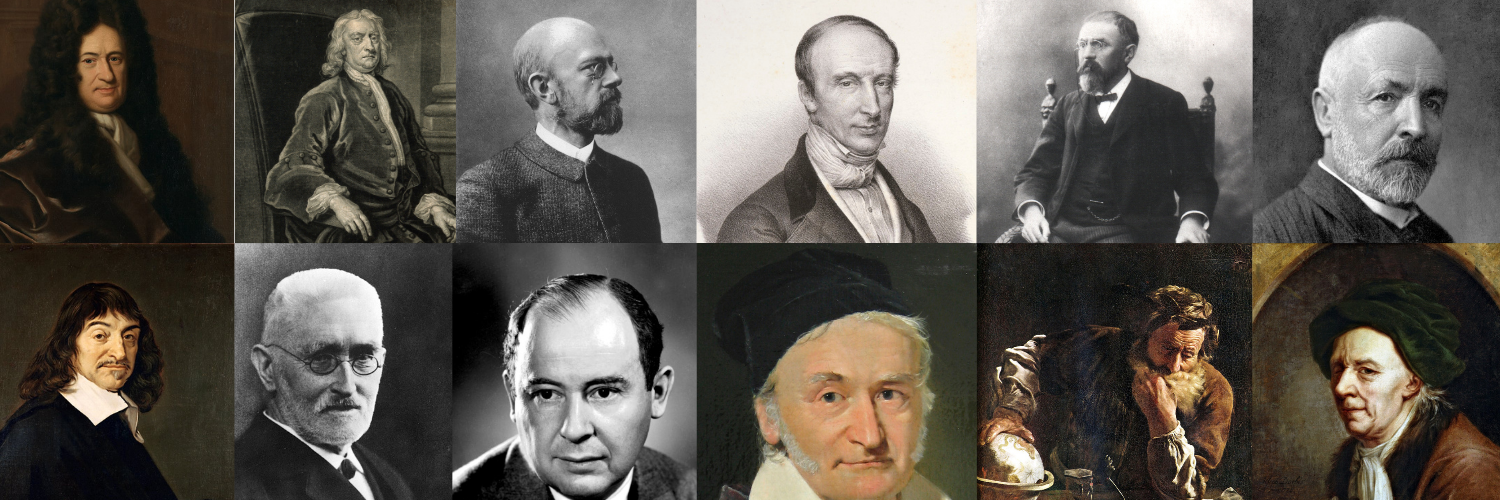What does it mean to infiltrate the other side of the argument?

The Fetish for the Image and the Digital Ethnographer
Coming from the field of design, my online feeds and timelines are flooded in aesthetics. Even after carefully picking accounts to follow and pages to like, the aestheticized image keeps on slipping through. Especially the iconic black and white Brutalist picture. It isn’t completely surprising, since a particular Brutalist Facebook group holds more than 40 of my digital friends. Brutalism photography is a celebration of its architectural rigidness, there is a certain appeal to its straight lines, awkward shapes, and obvious similarities to graphic design. Is it a building or merely a fetishized image?
On a regular afternoon, waiting for the train, Facebook suggested to me a ‘group I might be interested in’: Society for the Nonpreservation of Brutalism. With none of my Facebook friends already there, the Society for Nonpreservation feels like a Secret Society, a virtual sense of belonging to something with a seemingly official status. Upon sending my member request the group double checks if I comply with their values. “1. Least fave brutalist building?” and “2. Do you secretly like brutalism though?” as if they are waiting for Brutalist lovers to infiltrate their sacred space of dislike …
To set up a Society for Nonpreservation means there is a serious threat of others who strive to preserve what one would like to see demolished. Quite quickly after Brutalist buildings were constructed in the 50s as low-cost social housing in Great Britain, the general opinion about them shifted. By the 70s, what was once a socialist agenda of providing housing for everyone, became a symbol of totalitarianism.[1]
The revival of Brutalist popularity seems to be sparked or at least perpetuated by social media, with Instagram accounts and Facebook groups flooding in concrete loving imagery. The #SOSBRUTALISM campaign, book, and exhibition, has collected 42.7k Instagram followers to “save the concrete monsters!”. The Brutalism Appreciation Society, of which many of my digital friends are a part of, has over 127k members. Voicing concern over this development, the Society for Nonpreservation forms a counterweight.
While it is very easy to think about the reproducibility of the brutalist building within Instagram and blogging, I think one also needs to think about the relational networks, cultures, and ecologies of images that are being reproduced by new connectivities online. I think that is a correlation to the kind of aspiration the architects and designers had about the new communities they were also trying to imagine and revisualise in the spaces.
– Victory Walsh at RA talk ‘The concrete fetishes: the ghost of Brutalism’s radical social agenda’[2]
I’m not an architect. My quest into the Society for the Nonpreservation of Brutalism is more digital ethnographic than anything else, employing participant observation to study the community that is formed around the Nonpreservation argument. Not involving myself in the argument itself, but rather in the way the conversation is held, I focus on the form rather than the content of the discussions. Consciously not disturbing the regular interactions, I embody a fly on the wall, taking note of what is happening. Not very different from the classic lurker, the passive social media account everybody has in their digital friend groups, I join in, listen, and watch.
As discussed in Schutz’s essay The Stranger, the observer ought to look at an environment as being a total stranger, to expose the social and cultural construction of an environment that might be taken for granted by its members.[3] Moving beyond what I think I know about digital societies, yet acknowledging my bias as a secret lover of the fetishized image, I’m a stranger in disguise.
Nonpreservation Observation: Jokes and Politics
I return to my new community – the Society for Nonpreservation that is. Once I’m allowed in (answers to the questions: 1. The Barbican 2. Maybe, I’m not sure), the description text of the group welcomes me. Clearly stating what to expect, it reads:
Some people want to preserve brutalist architecture–they’re the people who don’t have to live with it. From Boston to Birmingham, from Tel Aviv to Tiraspol, cities the world over have been scarred by these inhuman, concrete monstrosities. They’re unpleasant to look at and worse to walk by. They damage the historic and unique character of a place. They must go.
Created on the 13th of August, 2019, the group now has 1.6k members. Contrary to the Appreciation Society, the Society for Nonpreservation is public, allowing non-members to view its content. Posts are made on a regular basis, approximately once a week.
Jokes, memes, and gifs
Taking a look at the discussion section of the Society for Nonpreservation, one finds what one expects to find. The members share images of what should not be preserved, generally met by likes, shares, and comments; expressions of agreement. There is a lot of “hideous!” and “how fugly” to be found, as well as some “ooooh i’d love go go unpreserve that one yes i would”. A poll allows members to vote for the worst brutalist building ever – the winner is Boston City Hall. A Google review of the same building is shared, Boston City Hall – 2 stars “The outside is the worst looking building on the planets. I built a tree fort When I was 9 or 10 that was better looking”.

These kinds of disapproving jokes is what the majority of the group’s content consists of, and let’s be honest, the reason for me to stay in the group and have a good laugh. The best ones are the visual references, it is an easy joke to make – things always tend to look like other things. But when the comparison is apt, and housing complexes do look like themed wedding cakes and stacks of washing machines, I can’t help it for a grin to appear on my face.

Socio-political arguments
Underneath the wrecking ball gifs and “I hope the Groningen earthquake takes care of this” comments, there are larger socio-political arguments at play. The first layer is the difference between an image and the lived experience: “These kids live in the suburbs and only know architecture through Pinterest and never have to wonder what it’s like to actually Iive and work in the buildings they think they like.”
More than “objectively ugly architecture”, Brutalism is seen as “a pseudo-intellectual competition”, not validating “the experience of people who live, work and pass by it day to day”. Similarly, the idea of the building versus the experience of the building is emphasized, but with an added layer of “elitism” on the behalf of the “Pinterest kids”. The “objectively ugly architecture”: is later explained by someone else: “… said that Brutalism is ‘objectively’ ugly. Is that overreach? Perhaps, but barely: what else would you call a style that ACTIVELY and EXPLICITLY rejected beauty — that acknowledged that ‘beauty’ was a norm, called it evil, and then sought to embody its opposite?”

Building on the idea versus the lived experience argument, ivory tower architects are the ones to blame: “Brutalism often looks great on paper. That’s the whole problem. It’s self centered, ivory tower architects who don’t think past the drafting table and don’t care how a building is actually realized assuming that their designs are brilliant because of some obtuse geometrical logic that doesn’t actually make a building livable.” When another post points out the fascist ideas of star architect Le Corbusier, “FYI, all these students, architects and designers who often think they’re radical leftists are supporting the work of an actual Nazi collaborator”, the political character of the group can no longer be disputed.

Trolls
The elitism argument resulted in easy critique as brutalism itself was created as housing for the masses, yet this critique is quickly shut down in a way that closely resembles the expelling of trolls. “Brutalism was essentially a troll movement against the average person’s aesthetic sensibilities, so it makes sense that people who like would troll people who don’t.”
When someone disagrees with something, their argument is easily taken as favoring brutalist architecture. A comment to the ‘brutalism is a pseudo intellectual competition’ -rant reads “Lol did you read what you wrote? Are you instead into the funeral parlor aesthetic of the suburbs?”, which is immediately met with “did you even read the group description?” and “Are you lost”?. An “its beautiful” comment is met with a gif of a silence gesture. Starting with the questions upon being led in, throughout the group admins and members question the intentions of potential pro-brutalist. “Guys be careful it seems like pro brutalists are trying to infiltrate the group”.

The comment “So is this group for ironically hating brutalism or for real?” is met with “for real”, and later “why would anyone assume that a person’s hatred of ugly ecologically disastrous buildings is ironic?” The Society for Nonpreservation is clear about its point of view. Sharing a link to The Other Group, The Appreciation Society, results in the comment “Why do you guys need to come in here and post this stuff. I dont come to brutalism groups and post good architecture” and “Like actually can you please just leave or stop posting if you’re just here to troll? Let us have this little corner of the internet while numtot drools over concrete slab”.

Similar lived experiences
Having such disdain for a particular architectural style, begs for a good origin story. If not personal trauma, then what can elicit such a strong response? Members share their personal experiences throughout the discussion. Replying to a post of a university student who was afraid of developing Stockholm syndrome for her brutalist university buildings, a member says that working and studying in brutalist architecture “only radicalised me more”. Studying philosophy “in despair” at De Vrije Universiteit in Amsterdam, to spending 3 years in law school “in brutalist monstrosity”, the urge to Nonpreserve exceeds strictly theoretical arguments.
In sharing their lived experiences, members reach out to see whether others are from their region. “Post the worst brutalist buildings in your city!” is met with 50 comments – mostly buildings in Israel, the US, and Canada. To the poll “Where do you live now?”, a majority votes for “NYC is not in New England”, “Northeast US”, and “Southern US”. Whereas for Brutalist Appreciators one’s physical location might not matter as much, for Nonpreservationists one’s place of residence has more meaning. People relate to architecture through their geopolitical context, where one lives and how policies (do not) regulate housing influences the experience of living among ‘monstrosities’. Within the group, people look for others from their regions: “As someone who grew up near the UMass Amherst campus, I had to see this thing too many times. Any other Western Mass peeps here?”

The Other Groups
The Society for the Nonpreservation of Brutalism is a counterweight to The Other Group, its enemy The Brutalism Appreciation Society. Within the myriad of Facebook groups, some are more like-minded, such as Preservationist Memes for Turret-Oriented Teens (“We’re here to enjoy old buildings and not to fight, so please take the ‘but muh density’ elsewhere, thanks.”), Dank Neo-Traditional Architecture Memes for Premodern Teens (“Surreal Memes dissing LeCorbusier are encouraged”), and liking brutalism is not a personality (whose standpoint is self-evident).

The relationship to the famous group New Urbanist Memes for Transit-Oriented Teens, or numtot in short, is more complex, as a member states “So they’re basically going back to Corbusier in that group? NUMTOTS are so bizarre. That group messes with my brain. ” An ex-numtot states “So this group is anti-NUMTOT, right? I had to leave because it was turning into a hyper-density, Kowloon-level circle jerk. (No offense to the mods, they’re cool af.)”. Someone replies: “we’re anti to the hyper density shit for sure” and “Also, not that this group is anti left wing, it’s a mix of people from all political spectrums but there’s a lot of …open communism there and I think most people here don’t go that far”. The numtots are seen as ill-informed: “A lot of people in NUMTOTs don’t really know as much as they think they do, especially on things like architecture. I say this from experience being an observer in the group.” Within the context of the Society for Nonpreservation, the numtots become, in turn, the subject of a meme.
” An ex-numtot states “So this group is anti-NUMTOT, right? I had to leave because it was turning into a hyper-density, Kowloon-level circle jerk. (No offense to the mods, they’re cool af.)”. Someone replies: “we’re anti to the hyper density shit for sure” and “Also, not that this group is anti left wing, it’s a mix of people from all political spectrums but there’s a lot of …open communism there and I think most people here don’t go that far”. The numtots are seen as ill-informed: “A lot of people in NUMTOTs don’t really know as much as they think they do, especially on things like architecture. I say this from experience being an observer in the group.” Within the context of the Society for Nonpreservation, the numtots become, in turn, the subject of a meme.

Opinions and the Architecture of the Platform

The question remains – how does the Brutalist discussion play out online? Is the formation of groups yet another example of the much-discussed (and disputed) echo chamber and filter bubble? Does the Facebook group facilitate polarisation and intellectual isolation? Sunstein’s work on the echo chamber argues that joining groups with ones own views and values, cuts people off from information that might challenge these beliefs.[4]
Similar (and sometimes exactly the same) imagery circulates in groups on both sides of the Brutalism argument, the difference is to be found in the values and arguments that are assigned to them. Unlike the filter bubble, the members of the Society for Nonpreservation consciously decide to position themselves on this side of the argument. The algorithm has not strategically filtered the wrecking ball comments over the adoration ones. The group’s opinion in Brutalism is clearly of a homogenous nature, the name portrays its standpoint and seemingly pro-brutalist arguments are shown the door.
However, the Society for Nonpreservation exists within a larger hybrid media ecology. Other groups are actively discussed, their conversations observed, and new Nonpreservationist members originate from them. In its origin, the Society for Nonpreservation is a counterweight to Appreciation Society. The true vacuum, as such, doesn’t hold up. When architecture turns image and these images circulate online, the Facebook groups are simultaneously a stage for and a product of this imagery, existing within and because of ecologies of virtual communities, perpetuating yet negotiating their ideas.
What does it mean to infiltrate the other side of the argument? For my opinion on Brutalist architecture, I’m not sure. Having spent hours looking through posts and comments, I can’t say I have grown fond of the Nonpreservation argument, nor the Appreciation one. Sometimes I enjoy the image, as to get lost in a dystopian alternate reality. Yet, having visited the Barbican and not being able to find my way out of the complex for more than half an hour, this particular lived experience could have turned me into a Nonpreservationist. The entrance question number 2. “Do you secretly like brutalism though?”, I could best answer with ‘Maybe, I’m not sure. Try to convince me of your argument, if you please.’
I do believe that becoming part of the other side of the argument gives a breath of nuance every argument on the internet could use once in a while. What to do with the Brutalist buildings comes second to listening to what the opponent has to say, in all their likes, comments, gifs, and argumentation. If not because of your investment in the topic, then the jokes are worth passing by for. You don’t have to agree to share a laugh, after all.
References
All images are fragments from Society for the Nonpreservation of Brutalism, modified to guarantee the privacy of its members.
[1] “Brutalist Architecture: What Is Brutalism?” Architecture & Design. https://www.architectureanddesign.com.au/features/list/a-look-at-brutalist-architecture.
[2] Walsh, Victoria. “The Concrete Fetishes: the Ghost of Brutalism’s Radical Social Agenda.” Royal Academy: Futures Found The Real and Imagined Cityscapes of Post-War Britain. Lecture presented on March 20, 2017.
[3] Schuetz, A. (1944). The Stranger: An Essay in Social Psychology. American Journal of Sociology, 49(6), 499-507.
[4] Sunstein, Cass R. Republic.com 2.0. Princeton, New Jersey: Princeton Univ. Press, 2009.























